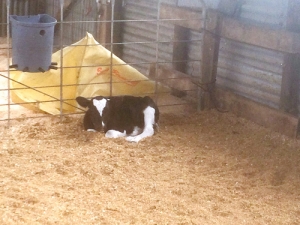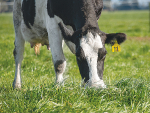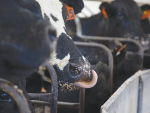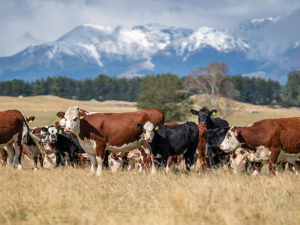The most common cause of mastitis at calving, both clinical cases and new subclinical infections, is Streptococcus uberis (Strep uberis). This environmental organism is passed in the faeces of cattle, so the major source of these mastitis infections onfarm is the faeces and mud that contaminate teats.
Though Strep uberis is also capable of spreading from cow to cow during milking, new infections at calving are far more likely to be from the environment.
The dry-off process raises the risk of mastitis infections at calving, but there are ways to mitigate that risk. Most cost very little; the main thing is to manage the transition process.
1. Minimise faecal contamination
The amount of faecal contamination in the calving area will be directly proportional to the number of animals and how long they are there.
Have you got clean areas for calving that have not been grazed for the last few weeks?
Can you regularly move the springers to a fresh clean area as the current area becomes too contaminated (more than two cow pats/sq.m)?
Can you reduce the number of springers in the calving area to those very close to calving, so numbers are lower and they are there for less time?
2. What is your strategy to deal with cows that drip milk before calving?
After dry-off, cows form a natural keratin teat plug to seal and protect the teat canal during the dry period. The use of an internal teat sealant at dry-off adds to this protective seal.
However, as a cow approaches calving, if that seal is lost and the cow begins to drip milk, the teat canal is now at high risk of bacteria entering.
Cows on the point of calving with large, tight udders that are dripping milk should usually be brought in and milked twice daily. Discuss with your vet whether anything can be done to calve these cows promptly.
3. How do you handle cows, especially heifers, with udder oedema?
Cows, especially heifers, with udder oedema (flag) usually have hard swollen teats more at risk of infection, and they are liable to not let down properly due to the discomfort.
Discuss with your vet options for treatment to quickly reduce the flag in these animals, and to enhance milk let-down.
Be patient and ensure milk let-down has occurred before milking them. Especially take care not to overmilk these animals, especially if you milk them 'on the bucket' because if you do they will experience higher vacuum than cows milked normally.
4. Milk freshly calved cows and heifers preferably within 12 hours
The sooner a freshly calved animal is in the dairy being milked, the sooner you can check her, and the sooner you fully milk her out, the greater the chance of flushing out any recently arrived bacteria.
The calf will never achieve this goal for you, and the sooner you have the calf brought in, the sooner you can administer colostrum to that calf if necessary.
All freshly calved cows and heifers should have their teats washed and dried at least for the first milking. This removes contamination from teats, causes effective milk let-down, gives better milking characteristics and allows the post-milking teat spray and emollient to access teat skin properly and do its job. And it only costs a minute of your time.
Consider adding a little extra emollient to your teat spray during wet, muddy conditions to enhance teat skin condition.
5. Minimise the exposure of fresh cows to environmental bacteria after calving
Recently calved cows are amongst the highest risk cows for new mastitis infections – especially in wet, muddy conditions.
These cows should be in a fresh, clean environment, yet we regularly see them sent to the little fresh cow paddock beside the dairy for their colostrum period. Though this area may have been clean at the start of calving, it rapidly becomes badly contaminated. Don't put your highest risk cows in the highest risk area.
6. Detect clinical cases early and ensure milk is suitable for the vat
All freshly calved cows should be checked for mastitis at every milking in the colostrum period. The sooner you detect a clinical case, the sooner you can treat it and the higher the chance of cure.











